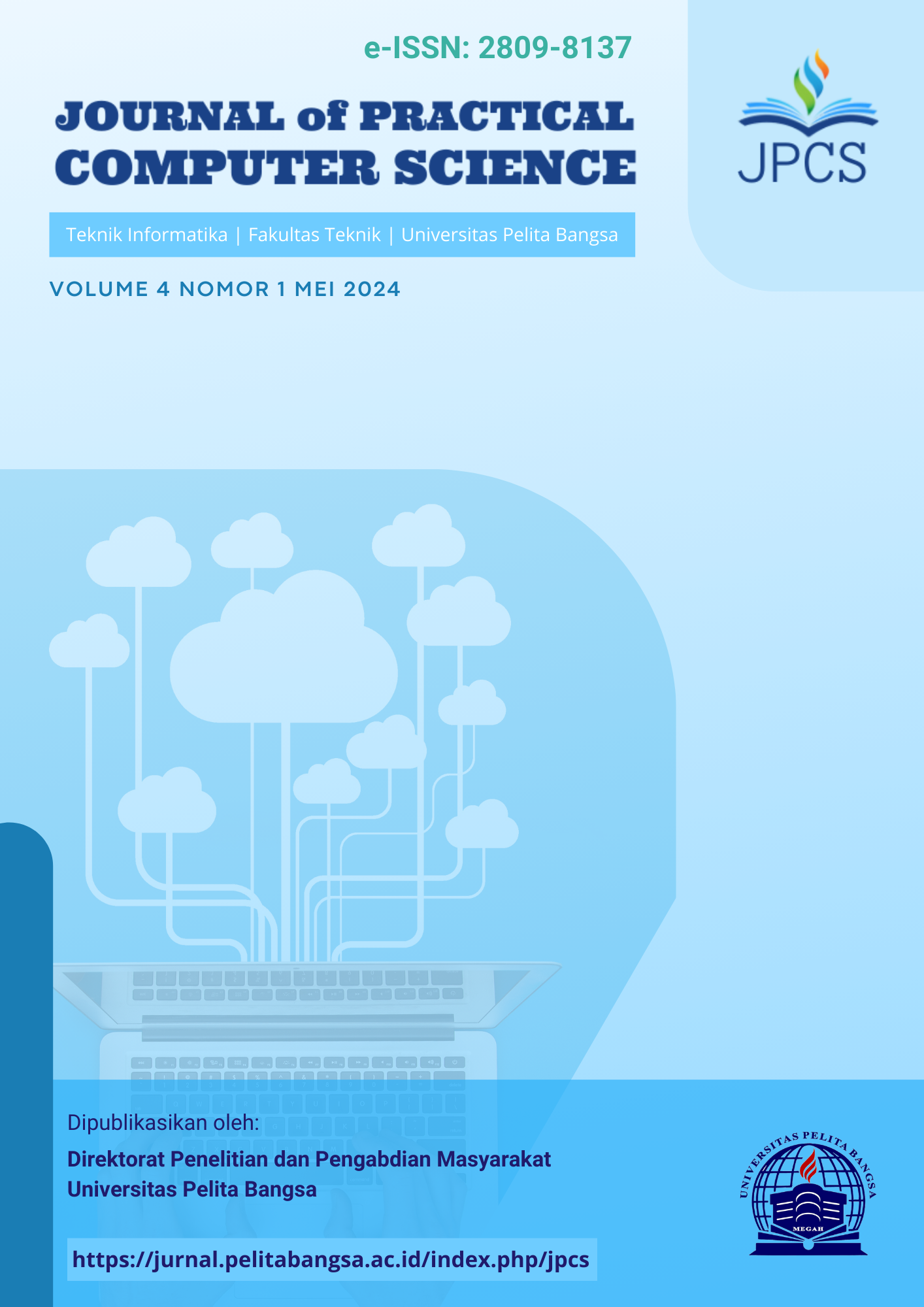Evaluation of System Access Security in The Implementation of Multi-Factor Authentication (MFA) in Educational Institutions
DOI:
https://doi.org/10.37366/jpcs.v4i1.4451Keywords:
Multi-Factor Authentication (MFA), Educational Institutions, System AccessAbstract
Information systems in educational institutions have the potential to be targeted by various parties, especially unauthorized parties, so they require a higher layer of security to protect sensitive data and secure user access. One solution that can be implemented is the implementation of Multi-Factor Authentication (MFA), a security approach that utilizes more than one authentication method to secure access to the system. MFA is a security method that requires more than one way to verify a user's identity when accessing a system, application, or service that aims to increase security by adding an additional layer of protection beyond using a single passphrase or password. This research aims to evaluate the effectiveness and impact of implementing MFA in the context of system access security in educational environments. The research methodology involves surveying system users, statistical analysis, and monitoring access activity to assess the extent to which MFA is successful in reducing security risks and protecting sensitive information. The research results show that the use of MFA in educational institutions can significantly increase system access security. Several obstacles that arise become challenges in solving problems regarding the use of MFA. Therefore, this article also examines recommendations for increasing the implementation of MFA in educational institutions. It is hoped that this research can contribute to the positive impact of MFA in improving system access security in the context of educational institutions by optimizing information technology in protecting data integrity and user access security.
Downloads
References
Badeges, W., & Fauzi, M. N. (2020). Implementasi Multi Factor Authentication Pada Phpmyadmin. 35–39.
Baldin, I., Chase, J., Crabtree, J., Nechyba, T., Christopherson, L., Stealey, M., Kneifel, C., Orlikowski, V., Carter, R., Scott, E., Sone, A., & Sizemore, D. (2022). ImPACT: A networked service architecture for safe sharing of restricted data. Future Generation Computer Systems, 129, 269–285. https://doi.org/10.1016/j.future.2021.11.026
Bharadwaj, S., Amin, P., Ramya, D. J., & Parikh, S. (2024). Reliable human authentication using AI-based multibiometric image sensor fusion: Assessment of performance in information security. Measurement: Sensors, 33(October 2023), 101140. https://doi.org/10.1016/j.measen.2024.101140
Buccafurri, F., De Angelis, V., Lazzaro, S., & Pugliese, A. (2024). Enforcing security policies on interacting authentication systems. Computers and Security, 140(October 2023), 103771. https://doi.org/10.1016/j.cose.2024.103771
Cahyaningrum, Y. (2023a). Analisis Tata Kelola Arsitektur dan Perancangan Sistem Enterprise dalam Ekspedisi Barang Pada Perusahaan Logistik. Jurnal Rekayasa Sistem Informasi Dan Teknologi (JRSIT), 1(2), 118–122.
Cahyaningrum, Y. (2023b). Penerapan Artificial Intelligence Dalam Dunia Pendidikan. Amplifier, 13(2), 62–68. https://stuvia.id/tips-belajar/artificial-intelligence-dalam-pendidikan/
Cahyaningrum, Y., Suryono, S., & Warsito, B. (2021). Fuzzy-Expert System for Indicator and Quality Evaluation of Teaching and Learning Processes Online Study Programs. E3S Web of Conferences, 317, 05021. https://doi.org/10.1051/e3sconf/202131705021
Das, S., Wang, B., Tingle, Z., & Camp, L. J. (2019). Evaluating User Perception of Multi-Factor Authentication: A Systematic Review. http://arxiv.org/abs/1908.05901
Dermawan, I., Baidawi, A., Iksan, & Mellyana Dewi, S. (2023). Serangan Cyber dan Kesiapan Keamanan Cyber Terhadap Bank Indonesia. Jurnal Informasi Dan Teknologi, 5(3), 20–25. https://doi.org/10.60083/jidt.v5i3.364
Fitrisia Munir, Irfan Nursetiawan, Yuniana Cahyaningrum, Hermi Oppier, S. S. (2023). Kebijakan Publik di Era Digital. In CV. Karsa Cendekia. http://www.nber.org/papers/w16019
Ibrahimy, M. M., Norta, A., & Normak, P. (2023). Blockchain-Based Governance Models Supporting Corruption-Transparency: A Systematic Literature Review. Blockchain: Research and Applications, 100186. https://doi.org/10.1016/j.bcra.2023.100186
Iftikhar, A., Qureshi, K. N., Shiraz, M., & Albahli, S. (2023). Security, trust and privacy risks, responses, and solutions for high-speed smart cities networks: A systematic literature review. Journal of King Saud University - Computer and Information Sciences, 35(9), 101788. https://doi.org/10.1016/j.jksuci.2023.101788
Irawan, B., Sani, I., Febrian, W. D., Setiawan, Z., Abdullah, A., Aprizal, Wasil, M., Suseno, D. A. N., Rahayu, N., Soeharjoto, Umar, N., Chasanah, S., Bilgies, A. F., & Harinie, L. T. (2022). Konsep Dasar E-Business.
Kaiser, T., Siddiqua, R., Hasan, M., & Uddin, M. (2022). A multi-layer security system for data access control, authentication, and authorization. May.
Kokila, M., & Reddy K, S. (2024). Authentication, Access Control and Scalability models in Internet of Things Security - A Review. Cyber Security and Applications, 3(March 2024), 100057. https://doi.org/10.1016/j.csa.2024.100057
Komalasari, R. (2018). KESADARAN AKAN KEAMANAN PENGGUNAAN USERNAME DAN PASSWORD. TEMATIK - Jurnal Teknologi Informasi Dan Komunikasi, 5(2), 141–152.
Mishra, R. A., Kalla, A., Braeken, A., & Liyanage, M. (2021). Privacy Protected Blockchain Based Architecture and Implementation for Sharing of Students’ Credentials. Information Processing and Management, 58(3), 102512. https://doi.org/10.1016/j.ipm.2021.102512
Nanda, A., Jeong, J. J., Shah, S. W. A., Nosouhi, M., & Doss, R. (2024). Examining usable security features and user perceptions of Physical Authentication Devices. Computers and Security, 139(December 2023), 103664. https://doi.org/10.1016/j.cose.2023.103664
Naqvi, B., Perova, K., Farooq, A., Makhdoom, I., Oyedeji, S., & Porras, J. (2023). Mitigation strategies against the phishing attacks: A systematic literature review. Computers and Security, 132, 103387. https://doi.org/10.1016/j.cose.2023.103387
Ngurah, I. G., Derrick, D., & Satrio, N. (2023). Analisa Tindak Pidana Cyber Crime Pada Bidang Perbankan Nasional Berupa Pencurian Data Kartu Kredit ( Carding ). 1–12.
Ometov, A., Bezzateev, S., Mäkitalo, N., Andreev, S., Mikkonen, T., & Koucheryavy, Y. (2018). Multi-factor authentication: A survey. Cryptography, 2(1), 1–31. https://doi.org/10.3390/cryptography2010001
Phan, K. (2018). Implementing Resiliency of Adaptive Multi-Factor Authentication Systems. 65, 1–96. https://repository.stcloudstate.edu/msia_etdshttps://repository.stcloudstate.edu/msia_etds/65
Ray, P. P. (2023). Web3: A comprehensive review on background, technologies, applications, zero-trust architectures, challenges and future directions. Internet of Things and Cyber-Physical Systems, 3(May), 213–248. https://doi.org/10.1016/j.iotcps.2023.05.003
Tripathi, G., Ahad, M. A., & Casalino, G. (2023). A comprehensive review of blockchain technology: Underlying principles and historical background with future challenges. Decision Analytics Journal, 9(March), 100344. https://doi.org/10.1016/j.dajour.2023.100344
Tyagi, A. K., & Sreenath, N. (2021). Cyber Physical Systems: Analyses, challenges and possible solutions. Internet of Things and Cyber-Physical Systems, 1(July), 22–33. https://doi.org/10.1016/j.iotcps.2021.12.002
Vekariya, V., Joshi, M., Dikshit, S., & Manju bargavi, S. K. (2024). Multi-biometric fusion for enhanced human authentication in information security. Measurement: Sensors, 31(December 2023), 100973. https://doi.org/10.1016/j.measen.2023.100973
Yuniana Cahyaningrum, Yulifda Elin Yuspita, Diana, Asrul Sani, Yudo Devianto, Ragel Trisudarmo, I Kadek Arya Sugianta, Heru Budianto, Noni Rahmawati, Meidar Hadi Avizenna, Novi Aryani Fitri, Darmawan Aditama, Miftahul Jannah, Y. A. E. (2023). Arsitektur dan Organisasi Komputer (M. M. Artika Arsita, S.Kom. (ed.); 1st ed.). PT Penamuda Media.
Downloads
Published
How to Cite
Issue
Section
License
Copyright (c) 2024 Journal of Practical Computer Science

This work is licensed under a Creative Commons Attribution-ShareAlike 4.0 International License.


.png)





